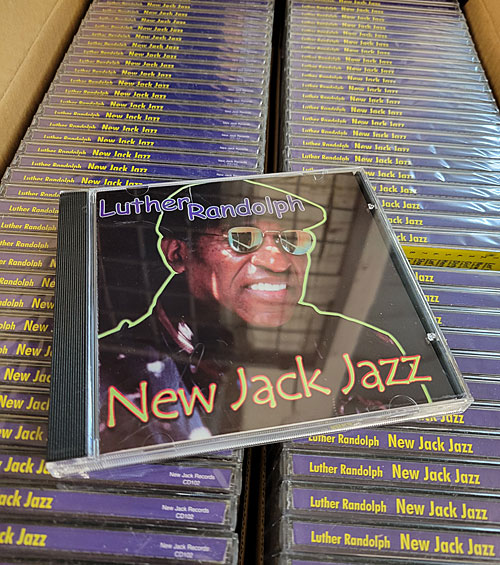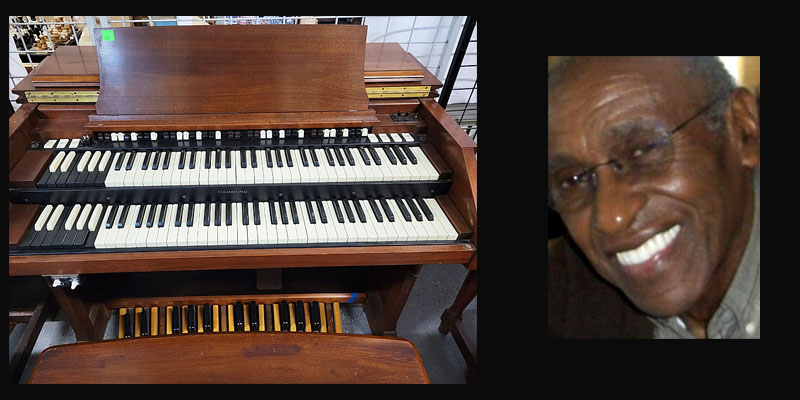The mournful and soul-penetrating rhythms of the organ filled the high-ceilinged room, piercing the air, commanding the attention of every person, every piece of furniture and every artifact.
The young man sitting in front of the Hammond organ alternated between playing beautiful gospel music and scattering his fingers along the keys to test them. He had traveled from North Jersey south to Philadelphia to see, hear and feel. He was an organist for Pentecostal churches in Newark and was, in fact, looking for a 147 speaker, “because the 147 is brighter,” he says.
I had arrived at the auction house because I was intrigued by the person who owned the organs. The auction-house website had identified him as Philadelphia jazz organist and producer Luther A. Randolph. I had never heard of him.
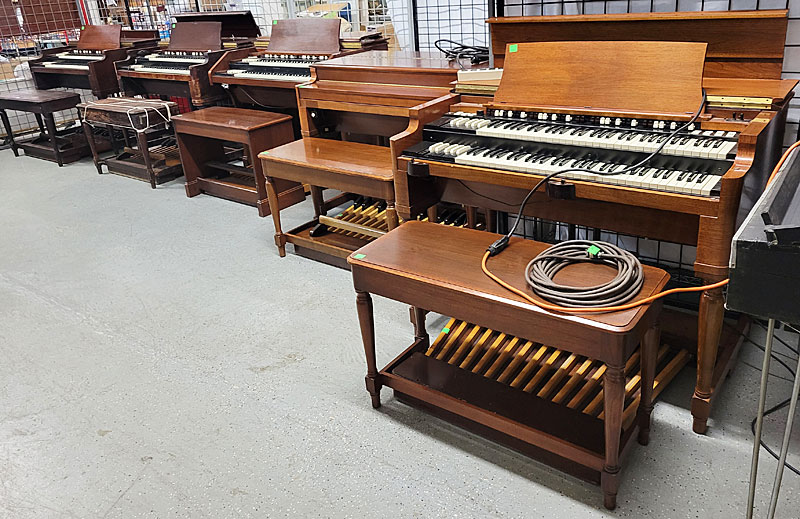
Randolph helped shape the Philadelphia sound a decade before Kenny Gamble and Leon Huff made it famous and universal in the 1970s with their Philadelphia International Records. In the early 1960s, Randolph, guitarist Johnny Stiles and vocalist Wendell McDougall III were involved in producing Barbara Mason’s 1965 hit song “Yes, I’m Ready” and Eddie Holman’s 1971 hit “Hey There, Lonely Girl.” The three men founded the soul record companies Harthon and Dyno-Dynamics Productions, and produced local talents whose records are cult classics.
At the auction house, the North Jersey man was not the only one in the market for the organs. Another, a photographer with a studio upstairs in the building, dropped by to play one of the Hammond B-3 organs for three interested friends – “just to know if they’re good,” he explains.
“I don’t know who owned it,” says the photographer, who has performed professionally in the past. “These are in high demand. I know people who have them in their basement, just playing, practicing on them. They’re just staples. One, churches, two, jazz. Now they’re coming back. People who have skills on it, it’s like ‘Oh My God!”
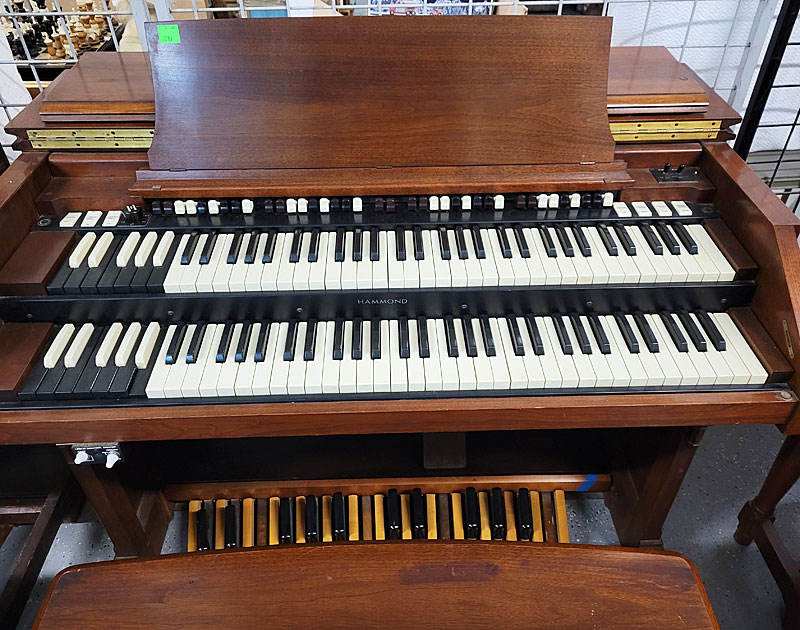
Four were Hammond B-3 organs, first introduced in 1955 and made famous by the great jazz organist Jimmy Smith. The fifth was a C-3. The auction house had called in a Hammond expert to determine their condition. Most needed work, parts and power cords, and all ached for some tender care. They had been in storage for years, said auction-house staffer Darrell “Butch” Wildes Sr. He wasn’t sure if Randolph had ever used them, but I’m sure he played at least one of these beauties at home.
The grouping also included about a dozen mahogany Leslie speakers on casters and three keyboards – a Roland and two RMI’s.
At least 20 people had stopped by to examine the organs, says Butch. Like the two men who visited that day, I’m sure they sat down at the only organ that was plugged in, touched those keys and foot pedals, and made it sound the way Billie Holiday sings.
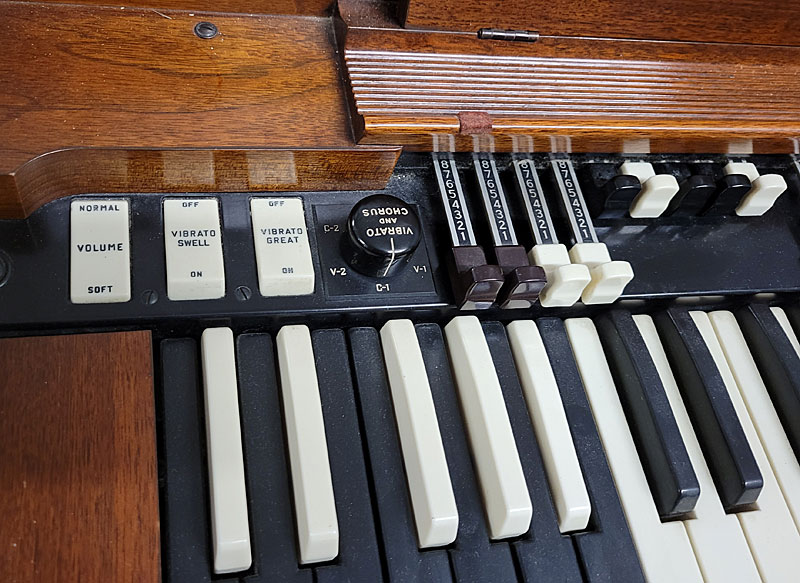
“I’ve seen a person play the organ, make you cry, especially when they play that one song at every funeral,” says Butch, who comes from a family of organists and plays the bass. “You just can’t help for just crying every time.”
The organs and their sounds made comrades out of the strangers who stood around them that day. The instruments drew stories from their memories: of some of the best organ players they had heard. Of a father who played with Billie Holiday and who at 90, still “jumps on the organ.” Of an uncle who could play a song using only the foot pedals – “He’s the only guy I ever seen who can make a foot pedal talk,” says Butch.
Randolph was born in Media, PA, about 20 minutes west of Philadelphia, in 1935. He played piano for the First Baptist Church of Morton (PA), and by the time he was 16 he was playing professional jazz and R&B. He gave up the piano around 1960, influenced by Smith who could make an organ sing with joy and pain.

Harthon is considered one of the greatest soul producers of the 1960s. Randolph and Stiles had become friends when both played in separate bands and kept bumping into each other at gigs. They were competitors who checked out each other’s shows. Eventually, they formed Harthon with drummer Norman Connors, who was later replaced by McDougal. The group produced records on their labels and others into the late 1970s.
Randolph, Stiles and Connors released a record titled “Crossroads” in 1962 that became a hit. Listen to the record here.
Harthon produced several of Holman’s early records, including “Eddie’s My Name.” Harthon and Dyno-Dynamics also produced 45s by Herb Ward, The Intentions, Bernard Williams and the Original Blue Notes, Irma & The Larks, The Volcanos, The Twilights, Lee Garrett, Nella Dodds (“Come See About Me”), the Cooperettes, the United Four and Larry Clinton. Some singers were produced with other labels, such as Marva Lee on Atco and The Tiffanys on Atlantic.
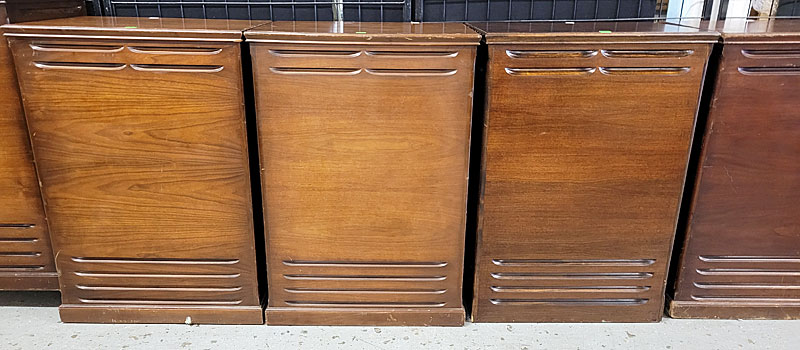
Much of their music is classified as “Northern soul,” dance music created by lesser-known artists whose works have become classics among enthusiasts in the United States, the United Kingdom and other countries.
McDougall discovered Mason, produced her songs and sang backup. Her “Yes, I’m Ready” reached No. 2 on the Billboard R&B charts in 1965. Holman’s “Hey There, Lonely Girl” reached No. 2 on the U.S. Billboard Hot 100 Pop Chart in 1971.
One music site noted that the “Harthon stable was, if not a ‘hit factory,’ a ‘should have been a hit’ factory. … Harthon had its pick of the finest songwriters, vocalists and musicians in Philadelphia and the high quality of the resulting records shows that they knew what to do with that raw material. They released high quality records.”
Billboard reported in May 1965 that Randolph, Stiles, McDougall and record producer/radio personality Jimmy Bishop had formed Stilran Music, located in the office of Universal Record Distributors. The name is attached to several 45s as publisher.
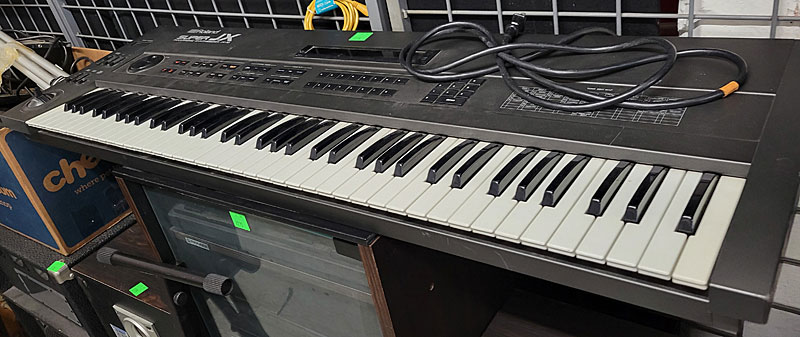
In the ensuing years, Randolph performed in Philadelphia and on the East Coast. While a performer, he was also an elementary and middle school teacher in the Philadelphia public schools. He received a bachelor’s degree in art from a Philadelphia school, and a master’s in education from Howard University in Washington. Randolph retired as a teacher in the 1990s.
After college, he joined the Army and was sent to Germany as a musical ambassador. In the 1950s, he acted against segregation, helping to plan sit-ins at a lunch counter at an F.W. Woolworth store in Chester, PA.
At the auction, every one of his instruments sold: the organs with speakers, from $1,200 to $3,600; the Roland keyboard, $600, and speakers, $95 to $1,100. Two boxes of his CDs, “New Jack Jazz” and “Aries,” recorded in the 1990s, sold for $15.
Randolph died in 2020 at age 84.
